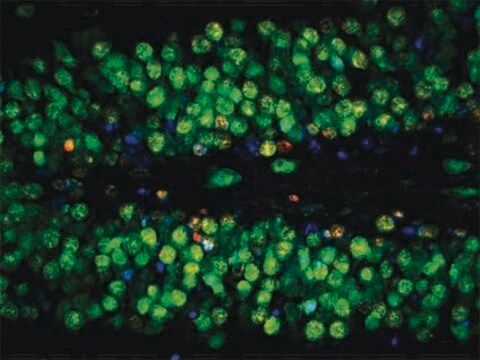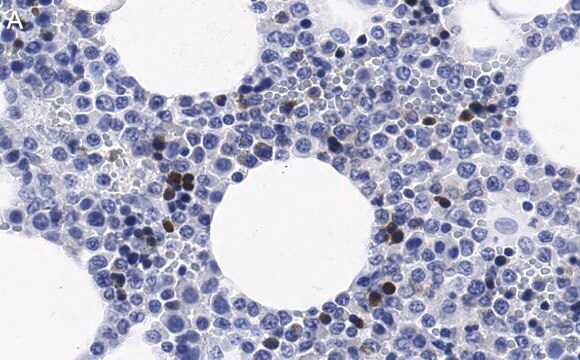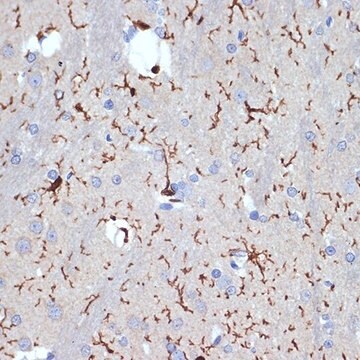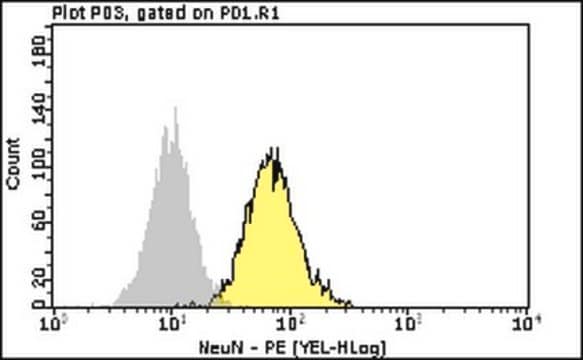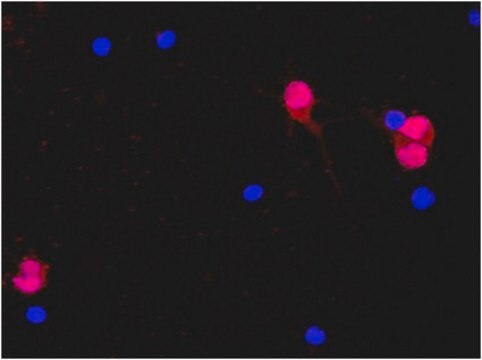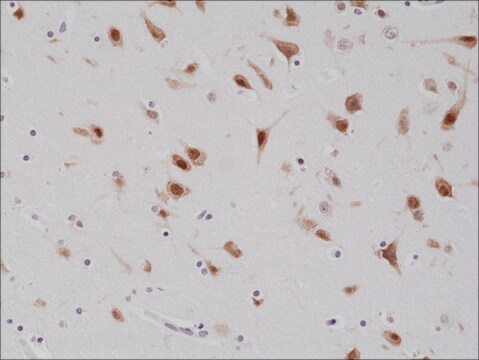ABN78A4
Anti-NeuN (rabbit) Antibody, Alexa Fluor™ 488 Conjugate
from rabbit, ALEXA FLUOR™ 488
Sinónimos:
NEUronal Nuclei, Neuronal Nuclei
About This Item
Productos recomendados
origen biológico
rabbit
Nivel de calidad
conjugado
ALEXA FLUOR™ 488
forma del anticuerpo
affinity isolated antibody
tipo de anticuerpo
primary antibodies
clon
polyclonal
reactividad de especies
rat, mouse
técnicas
immunocytochemistry: suitable
immunohistochemistry: suitable
Condiciones de envío
wet ice
modificación del objetivo postraduccional
unmodified
Información sobre el gen
mouse ... Rbfox3(52897)
rat ... Rbfox3(287847)
Descripción general
Especificidad
Inmunógeno
Aplicación
Neuroscience
Developmental Neuroscience
Calidad
Immunohistochemistry Analysis: A 1:100 dilution of this antibody detected NeuN in adult mouse brain tissue.
Descripción de destino
Forma física
Almacenamiento y estabilidad
Nota de análisis
Adult mouse brain tissue
Información legal
Cláusula de descargo de responsabilidad
¿No encuentra el producto adecuado?
Pruebe nuestro Herramienta de selección de productos.
Código de clase de almacenamiento
10 - Combustible liquids
Clase de riesgo para el agua (WGK)
WGK 2
Punto de inflamabilidad (°F)
Not applicable
Punto de inflamabilidad (°C)
Not applicable
Certificados de análisis (COA)
Busque Certificados de análisis (COA) introduciendo el número de lote del producto. Los números de lote se encuentran en la etiqueta del producto después de las palabras «Lot» o «Batch»
¿Ya tiene este producto?
Encuentre la documentación para los productos que ha comprado recientemente en la Biblioteca de documentos.
Los clientes también vieron
Nuestro equipo de científicos tiene experiencia en todas las áreas de investigación: Ciencias de la vida, Ciencia de los materiales, Síntesis química, Cromatografía, Analítica y muchas otras.
Póngase en contacto con el Servicio técnico